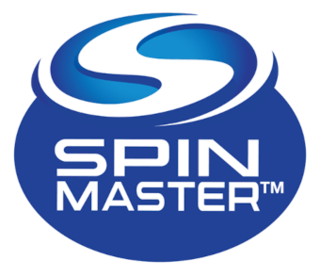
A bead is a small, decorative object that is formed in a variety of shapes and sizes of a material such as stone, bone, shell, glass, plastic, wood, or pearl and with a small hole for threading or stringing. Beads range in size from under 1 millimetre (0.039 in) to over 1 centimetre (0.39 in) in diameter.

The cabasa, similar to the shekere, is a percussion instrument that is constructed with loops of steel ball chain wrapped around a wooden cylinder. The cylinder is fixed to a long, wooden or plastic handle.

Pat the Bunny is the first "touch and feel" interactive children's book, written and illustrated by Dorothy Kunhardt. Since its publication in 1940, it has been a perennial best-seller in the United States. Rather than follow a linear narrative, the book invites the reader to engage in tactile activities, such as patting the fake fur of a rabbit, feeling sandpaper that stands for "Daddy's scratchy face," trying on "Mummy's ring," reading a book within a book, playing peekaboo with a cloth, and gazing into a mirror.

Geomag, stylized as GEOMAG, is a magnetic construction toy consisting of a collection of bars, each set with a neodymium alloy magnet at both ends, connected by a magnetic plug coated with polypropylene, and nickel-coated metal spheres. These elements interlock using magnetism, allowing for them to be assembled in various ways.

Education in El Salvador is regulated by the country's Ministry of Education. El Salvador consists of the following levels of education:
Techno Source is a handheld electronic game and TV game company selling electronic toys, games and learning aids. Based in Hong Kong with an office in New York City, it is a privately owned company founded in 2000 by Wayne Nathan and Rich Migatz. In April 2011, Techno Source was acquired by Li & Fung.
Baby Songs is one of the first, and longest-running, American, independent children's home video series. Since 1987, more than 4 million copies of Baby Songs have been sold.

Webkinz is a stuffed animal and video game franchise by the Canadian toy company Ganz. Webkinz stuffed animals have online counterparts in the video games Webkinz Classic and Webkinz Next. It was originally released by Ganz on April 15, 2005.
Play value is the essential value of a toy or game for play. The term is frequently employed in the field of child development and playwork for the assessment of toys, games, equipment and spaces. When they are fun and engaging, playthings and spaces are said to have play value; those that are quickly discarded or are considered uninteresting do not. In short, objects of play must be compelling and encourage the child's involvement in order to have true play value. Play value has been defined as 'how much play can you get out of something'. Classic toys are examples of toys with true play value as they continue to provide new discoveries and adventures in each subsequent session of play.
A smart toy is an interactive toy which effectively has its own intelligence by virtue of on-board electronics. These enable it to learn, behave according to preset patterns, and alter its actions depending upon environmental stimuli and user input. Typically, it can adjust to the abilities of the player. A modern smart toy has electronics consisting of one or more microprocessors or microcontrollers, volatile and/or non-volatile memory, storage devices, and various forms of input–output devices. It may be networked together with other smart toys or a personal computer in order to enhance its play value or educational features. Generally, the smart toy may be controlled by software which is embedded in firmware or else loaded from an input device such as a USB flash drive, Memory Stick or CD-ROM. Smart toys frequently have extensive multimedia capabilities, and these can be utilized to produce a realistic, animated, simulated personality for the toy. Some commercial examples of smart toys are Amazing Amanda, Furby and iDog. The first smart-toy was the Mego Corporation's 2-XL robot (2XL), invented in the 1970s

Stevanne Auerbach, also known as Dr. Toy, was an American educator, child development expert, writer and toyologist. She was best known for being an expert on as well as an advocate of toys, play and the toy industry. After more than fifty years in the field of toys, she was named one of seven Wonder Women of Toys in 2007 by Women in Toys and Playthings magazine. She was a frequent guest speaker on toys and play for all ages at industry, professional, parent and public meetings. She made several public appearances each year to promote her causes, which include building greater awareness in parents of their essential role as play tutors for their children, the educational, and many other benefits of play, and to encourage the enhancement of play value and high standards of quality, safety, and protection of creativity in toys within the toy industry.

Spin Master Corp. is a Canadian multinational children's toy and entertainment company. Spin Master employs over 1,600 people globally with offices in Australia, Canada, China, France, Germany, Hong Kong, India, Italy, Japan, Mexico, the Netherlands, Poland, Slovakia, Sweden, the United Kingdom, the United States, and Vietnam.

Elizabeth Carpenter is an American writer, fashion designer, maze maker, and board game designer. She lives in New York City where she operates her own business, Mazeology LLP.

The Parents' Choice Award was an award presented by the non-profit Parents' Choice Foundation to recognize "the very best products for children of different ages and backgrounds, and of varied skill and interest levels." It was considered a "prestigious" award among children's products, and had been described by the Cincinnati Enquirer as the industry equivalent of an Academy Award.
Juno Baby was a multiple Emmy Award winning line of children’s educational-development products that blend original music with puppet characters. The product line focuses around the characters of Juno, a six-year-old girl with a natural passion for music, her two-year-old brother Rai Rai, and several animal companions. The company has two brands: Juno Baby which is geared toward the toddler and infant market and Juno Jr. and the world of Harmonia Springs which focuses on pre-school aged children. who composed Turner Classic Movies' Cartoon Alley.
Pillow Pets are a brand of stuffed toys with velcro straps which enable them to be converted from a decorative pillow into a stuffed animal. The toys are made from chenille. Pillow Pets were invented by Jennifer Telfer in 2003. They first gained success when Telfer personally sold the toys close to the Christmas season of that year. They would later become more successful through television advertising, where the company's slogan, "It's a pillow, it's a pet, it's a Pillow Pet!" was featured in every ad. Pillow Pets have been used for charitable fund raising.
Hoppers is a classic Peg solitaire game released by ThinkFun in 1999. Players set up the board according to the pictures on each challenge card, then "leap frog" all the green frogs until only the red frog remains.

Toca Boca is a Swedish children's mobile video game developer. The company is owned by Spin Master and is based in Stockholm, Sweden.

String is a long flexible structure made from fibers twisted together into a single strand, or from multiple such strands which are in turn twisted together. String is used to tie, bind, or hang other objects. It is also used as a material to make things, such as textiles, and in arts and crafts. String is a simple tool, and its use by humans is known to have been developed tens of thousands of years ago. In Mesoamerica, for example, string was invented some 20,000 to 30,000 years ago, and was made by twisting plant fibers together. String may also be a component in other tools, and in devices as diverse as weapons, musical instruments, and toys.

Fuse beads, thermobeads, iron beads, or iron-fusible beads are multicoloured tubular plastic beads that can be arranged into 2D designs on a pegboard, and then fused together by the application of a hot clothes iron through parchment paper to form mosaics. Originally invented as a therapeutic device for the elderly, they were later sold as a children's toy, and have since attracted the interest of hobbyists. Common fuse-bead brands include Hamabeads, Perler Beads, and Nabbi Beads. A similar toy, aqua-dots, are spherical beads that are fused by spraying with water, rather than by the application of heat.












